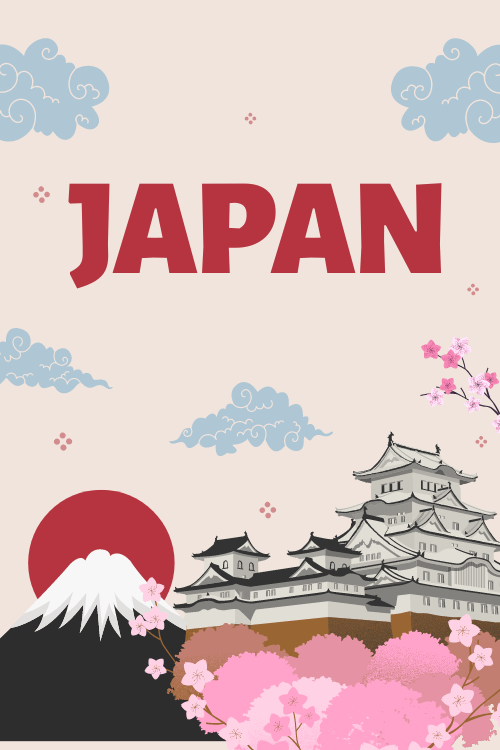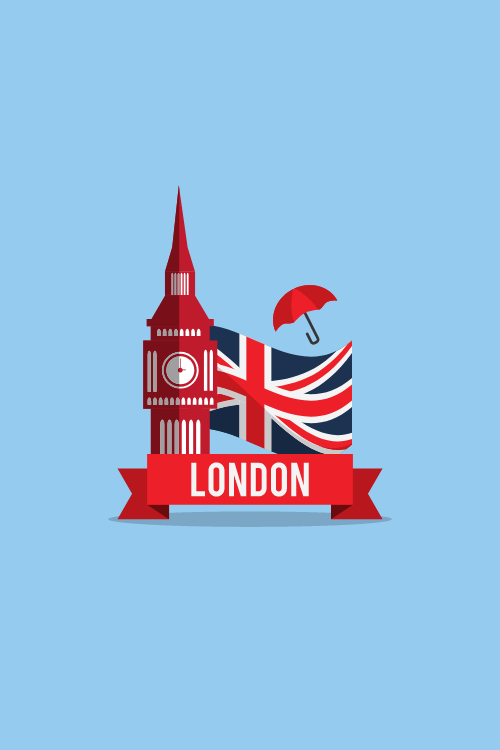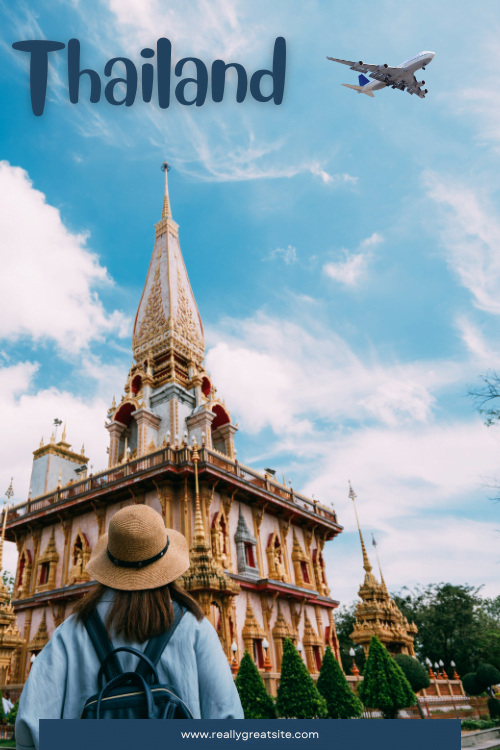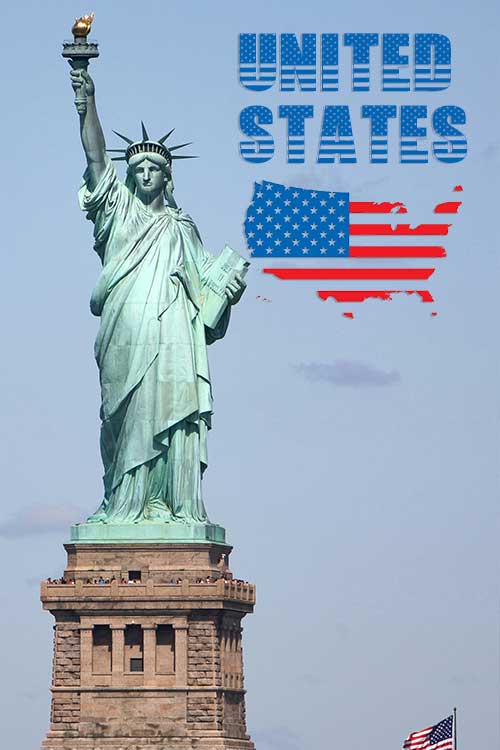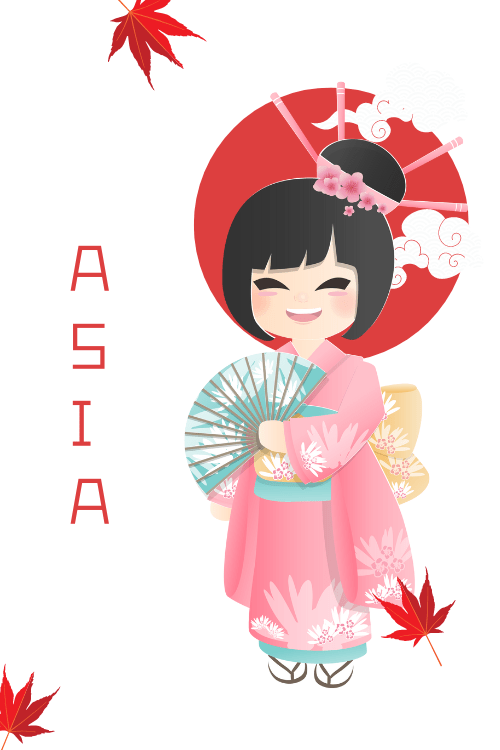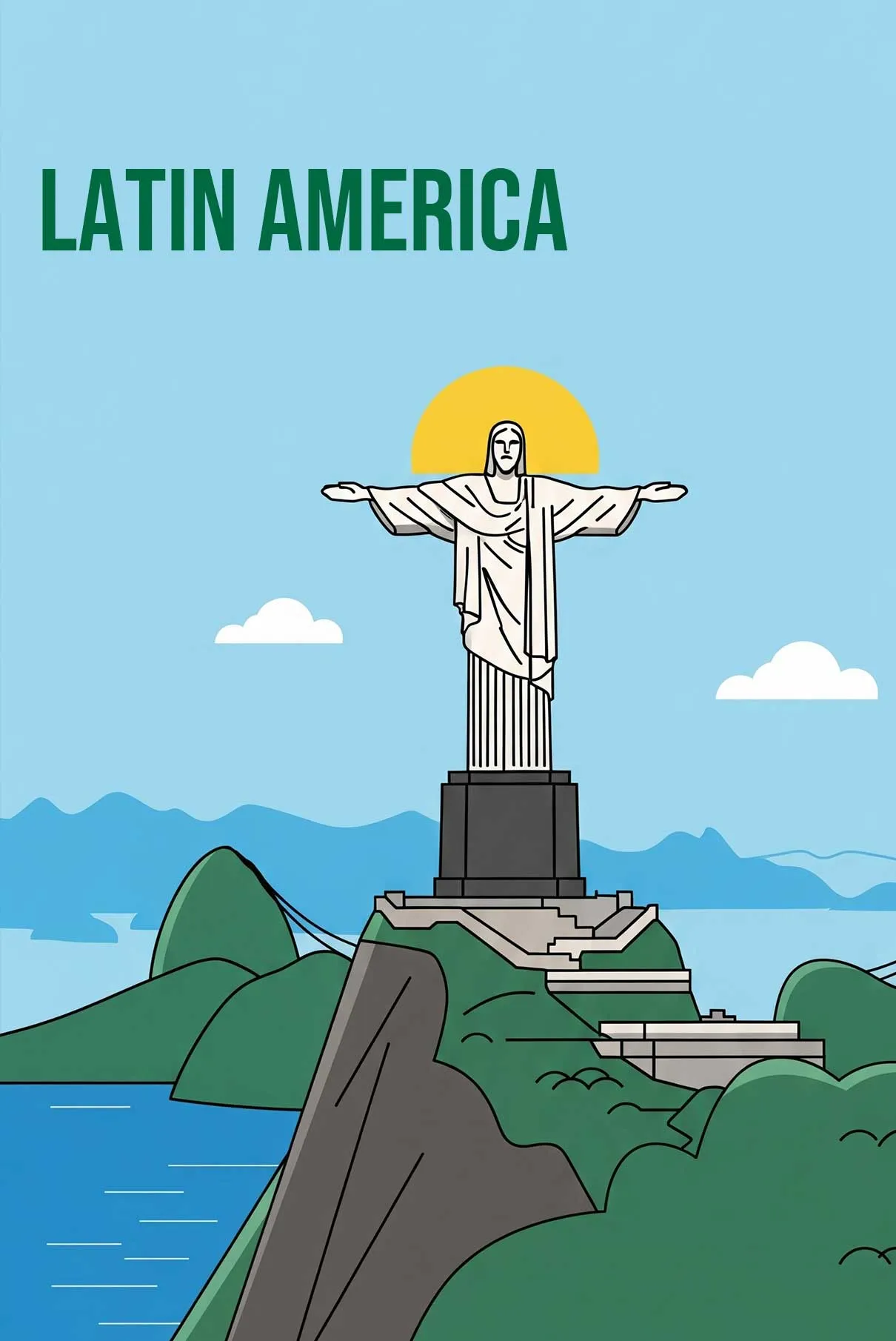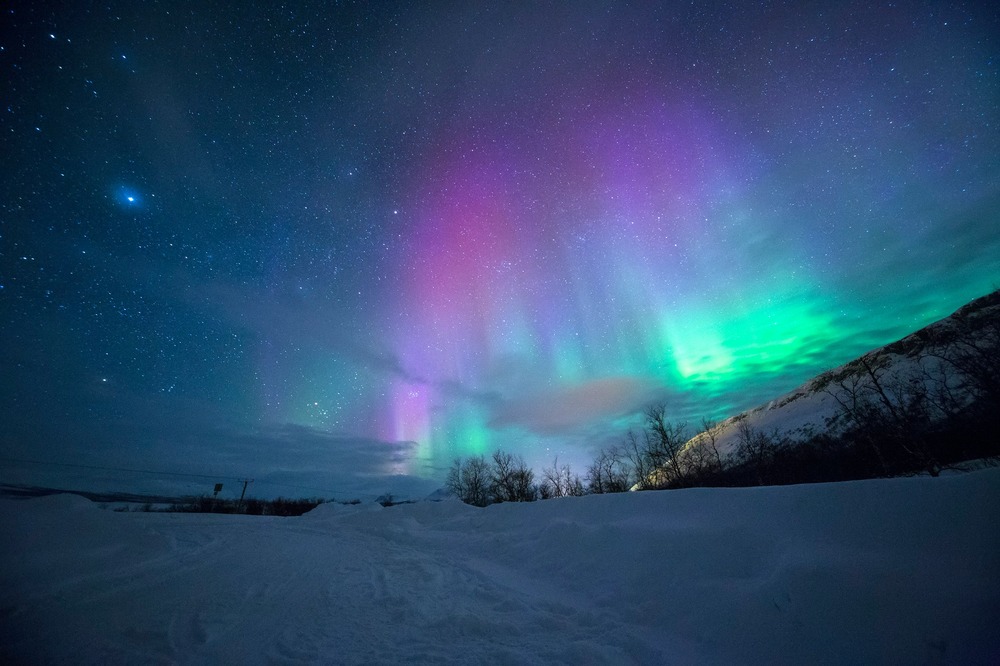Travel
The Best Time To Visit Norway: Your Ultimate Guide for an Unforgettable Trip
Thinking about a trip to Norway?
Norway stands as one of the world’s most captivating travel destinations, where pristine fjords meet snow-capped mountains and ancient traditions blend seamlessly with modern Scandinavian culture.
The timing of your visit can dramatically shape your Norwegian adventure, with each season offering its own distinct charm and unique experiences.
Whether you’re drawn to the celestial dance of the northern lights or the midnight sun’s ethereal glow, understanding when to visit is crucial for crafting your perfect Norwegian journey.
When is the Best Time to Visit Norway for Northern Lights?
For many travelers, witnessing the aurora borealis tops their bucket list, and Norway provides some of the most spectacular viewing opportunities on Earth.
The best time to see the northern lights in Norway spans from October through March, when the polar nights create perfect dark conditions for this ethereal display.
Optimal Months for Aurora Borealis Viewing
The period between October and November offers an ideal combination of moderate temperatures and dark skies, making it great for outdoor viewing.
These months also typically have less cloud cover compared to deep winter, increasing your chances of clear visibility.
During these months, the weather in Norway is transitional, offering a mix of autumn clarity and early winter atmospherics that create perfect conditions for aurora hunting.
Best Locations in Northern Norway for Northern Lights
Within the Arctic Circle, cities like Tromsø and the Lofoten Islands serve as premier bases for northern lights observation. Tromsø, often called the “Gateway to the Arctic,” provides excellent infrastructure for visitors while maintaining the dark skies necessary for viewing.
The Vesterålen region, less touristy than its southern counterparts, offers equally impressive viewing opportunities with fewer crowds.
Tips for Photographing the Northern Lights
Getting the perfect shot of the northern lights requires careful planning and the right conditions.
The best weather for photography typically occurs during the shoulder season months of September and October, when temperatures are still manageable and skies tend to be clearer. Professional travel experts recommend staying at least 4-5 nights in your chosen location to maximize your chances of optimal viewing conditions.
Need Mobile Data While Traveling in Norway?
Stay connected throughout your Norwegian adventure with an eSIM – the modern alternative to traditional SIM cards.
Instant activation means you can start using your eSIM as soon as you arrive in Norway, without the need to wait for physical delivery. You can keep your home number active while using local data, and coverage is available across all Norwegian regions. Competitive rates compared to roaming charges make eSIMs an attractive option for travelers.
Multiple data packages are available to suit your needs, and easy top-up options ensure you never run out of data while exploring Norway’s vibrant culture.
Click here to see our Norway eSIM plans!
What’s the Ideal Season for Exploring Norwegian Fjords?
The majestic fjords of Norway present themselves differently throughout the year, each season painting these ancient waterways in distinct colors and moods.
Timing your fjord visit requires balancing several factors – from weather conditions to crowd levels and unique seasonal phenomena.
Summer Cruises: June to August Highlights
The summer months transform Norway’s fjord landscape into a vibrant canvas of emerald cliffs and sapphire waters.
June through August traditionally marks the peak season for fjord cruises, and for good reason. During this time, the famous midnight sun bathes the landscape in an endless golden glow, offering extended hours for exploration and photography.
The Oslo to Bergen route, perhaps the most celebrated fjord journey, becomes particularly magical during these months.
What many don’t realize is that summer in Norway brings an unexpected bonus: the waterfalls are at their most spectacular. As the winter snows melt, cascades of water create thunderous displays that even seasoned travelers find breathtaking. However, this popular time to visit does mean sharing these experiences with more fellow adventurers.
Shoulder Season Benefits: May and September
Here’s an insider secret that most travel guides won’t tell you: May and September often provide the sweet spot for fjord exploration.
During these months, you’ll find fewer crowds but still enjoy pleasant weather and relatively stable sailing conditions.
The springtime burst of wildflowers in May and the early autumn colors in September create unique photographic opportunities that summer visitors miss entirely.
Winter Fjord Experiences: A Unique Perspective
Winter transforms the fjords into something entirely different – and arguably more mysterious.
From December through February, the southern Norway fjords remain navigable while offering a uniquely intimate experience.
Picture snow-dusted cliffs rising from dark waters, their scale somehow more impressive against the winter sky. While summer brings the crowds, winter delivers solitude and a certain raw authenticity that many consider the truest way to experience these natural wonders.
A lesser-known fact: winter fjord cruises often combine northern lights viewing opportunities, particularly in the northern regions.
This dual experience of gliding through snow-flanked fjords while watching for the aurora borealis creates what many travel experts consider one of Norway’s best experiences.
How Does Norway’s Weather Affect the Best Time to Visit?
Understanding the country’s weather patterns isn’t just about packing the right clothes – it’s about crafting an experience that aligns with your travel aspirations. Let me share some insights that go beyond the typical weather forecasts.
Norway’s Climate Variations by Region
What fascinates me most about Norway’s climate is its remarkable diversity across regions. While many travelers picture Norway as uniformly cold, the reality presents a more nuanced story.
The Gulf Stream bestows the western fjords with surprisingly mild temperatures, while the northern parts beyond the Arctic Circle dance to an entirely different meteorological rhythm.
From my experience working with international travelers, I’ve noticed that many are surprised to learn that Bergen, despite its northern latitude, rarely sees temperatures drop below freezing, even in the winter months. Meanwhile, within the Arctic Circle, the weather creates distinct travel seasons defined not just by temperature, but by light conditions that shape every aspect of daily life.
Best Months for Great Weather and Outdoor Activities
The sweet spot for pleasant weather typically falls between June and August, when Norway bursts into life with endless summer days and comfortable temperatures.
However, here’s an insider tip that often surprises my clients: May and June often offer more stable weather patterns than July or August, with the added bonus of fewer crowds and lower prices.
For outdoor enthusiasts, I’ve found that late August to early September provides an ideal balance. The summer crowds have thinned, the hiking trails are still accessible, and the weather maintains a comfortable stability before autumn’s unpredictability sets in.
Plus, this period offers something special that many guidebooks overlook: the beginning of the mushroom hunting season, a beloved activity among Norwegians that visitors rarely get to experience.
Preparing for Norway’s Unpredictable Weather
Weather preparation isn’t just about checking forecasts – it’s about understanding local patterns and micro-climates. The old Norwegian saying “There’s no bad weather, only bad clothes” carries profound truth, especially when you’re planning activities in the spring and fall months.
Think in layers rather than single heavy pieces, regardless of when they visit. Even during the summer months in southern Norway, weather conditions can shift dramatically within a single day. This variability, while challenging for planning, creates some of the most dramatic and photogenic moments you’ll experience.
When Should You Visit Norway for Hiking and Outdoor Adventures?
Having spent countless hours mapping trails and consulting with local guides, I’ve developed a deep appreciation for the intricate dance between seasons, terrain, and optimal hiking conditions in Norway. Let me share some hard-won insights that could transform your outdoor adventure planning.
Prime Hiking Season in Norway’s National Parks
The peak hiking window in Norway reveals itself like a carefully orchestrated performance. While many guidebooks broadly recommend “summer,” the reality is more nuanced.
The sweet spot typically emerges when the winter snows melt, usually from mid-June through late August, but here’s what most tourists don’t realize: the timing varies dramatically by altitude and latitude.
July often presents the ideal combination of conditions in the southern Norway regions.
The ground has dried sufficiently from the spring thaw, alpine flowers carpet the meadows, and the hiking trails have been freshly maintained for the season.
However, this perfect scenario comes with a caveat: you’ll be sharing these pristine paths with fellow enthusiasts from around the globe.
Best Time for Midnight Sun Experiences
One of the most extraordinary phenomena that transforms the hiking experience is the famous midnight sun.
North of the Arctic Circle, this celestial spectacle creates unique opportunities for what I like to call “timeless trekking.” From late May through July, the continuous daylight allows for flexible hiking schedules that would be impossible elsewhere.
Here’s an insider tip: plan your challenging hikes for the “night” hours. While other tourists rest, you can experience popular trails like those in the Lofoten Islands in near solitude, with the low-hanging midnight sun casting otherworldly shadows across the landscape.
Autumn Hiking: September to November Perks
Fall hiking in Norway offers what I consider the perfect trilogy: fewer crowds, stable weather patterns, and spectacular colors.
September and October reveal a side of Norway that summer tourists rarely witness. The mountains don their autumn palette, wild berries ripen along the trails, and the air carries a crispness that makes every vista more vivid.
Autumn brings what Norwegians call “golden hours” that seem to stretch indefinitely. The sun’s lower angle creates perfect conditions for photography, and the clearer air offers sharper views of the fjords and mountains. Plus, you’ll find the trails largely free from the summer crowds, allowing for a more immersive connection with the landscape.
What’s the Best Time to Experience Norway’s Winter Wonderland?
This country can transform into an entirely different realm during the winter months.
Let me share some insights from both locals and visitors who’ve experienced the magic of Norwegian winters.
December to February: Peak Winter Sports Season
When December arrives, Norway doesn’t just receive a dusting of snow – it undergoes a complete transformation.
January typically offers the perfect combination of snow conditions and increasing daylight hours.
While plenty of snow blankets both the popular routes and backcountry trails, what fascinates me is how the Norwegians have turned winter recreation into an art form.
Here’s something many first-time visitors don’t realize: the winter season in Norway isn’t just about skiing and snowboarding. The locals have mastered the art of embracing winter through what they call “friluftsliv” – a profound connection with outdoor living that persists even in the coldest months.
Unique Winter Festivals and Events
What truly sets Norwegian winters apart is how communities come alive during the darkest months. The Tromsø International Film Festival, for instance, creates this extraordinary juxtaposition of cultural sophistication against the raw Arctic wilderness.
The winter festivals here aren’t just events; they’re manifestations of centuries-old traditions adapted for modern times.
These celebrations serve as perfect anchors for trip planning, offering structured activities during a season that might otherwise seem intimidating to visitors.
Dog Sledding and Arctic Adventures in Svalbard
Timing is everything when it comes to Svalbard adventures.
The period between late February and early April offers what I consider the golden window for dog sledding experiences. The returning sun creates this magical twilight that paints the snow-covered landscape in surreal hues of blue and purple.
What’s particularly interesting is how the winter activities within the Arctic Circle follow a different rhythm than those in southern Norway. The experiences here aren’t just activities – they’re opportunities to immerse yourself in a lifestyle that has evolved over generations of Arctic living.
When is the Best Time to Visit Norway’s Major Cities?
The cities transform throughout the seasons, each offering a distinct perspective on Norwegian culture.
Oslo and Bergen: Year-round Highlights
The pulse of Oslo and Bergen beats differently as the seasons change, and understanding these rhythms can fundamentally shape your urban experience.
These cities balance their historic heritage with contemporary Nordic innovation, regardless of the season.
What is fascinating about Bergen is how the city’s famous rain actually enhances its charm.
The glistening cobblestones and moody atmosphere create this incredibly photogenic environment that many summer-only visitors miss entirely. Meanwhile, Oslo’s seasonal transitions offer a masterclass in urban adaptation, with each quarter of the city revealing different facets of its personality throughout the year.
Summer Cultural Events in Norwegian Cities
Summer transforms Norway’s urban landscapes into vibrant cultural canvases. From my experience coordinating with festival organizers, and how the extended daylight hours create this almost surreal energy, with cultural events spilling into the luminous Nordic nights.
What many visitors don’t realize is that August is the best time to experience this cultural renaissance.
The locals have returned from their July holidays, bringing with them a renewed enthusiasm for cultural engagement, yet the tourist crowds have begun to thin, creating this perfect sweet spot for authentic urban exploration.
Avoiding Tourist Crowds in Popular Urban Areas
Let’s talk about the shoulder seasons – particularly late spring and early autumn – often provide the most rewarding urban experiences. These periods offer what I call the “urban authenticity window,” where you can experience the cities as locals do, without the peak season crowds.
During these transitional periods, you’ll find the perfect balance between accessibility and authenticity. The restaurants still buzz with energy, but you can actually secure reservations at those sought-after establishments.
The museums and galleries maintain their full programming, but you can linger in front of masterpieces without feeling rushed.
It’s during these moments that the true character of Norwegian cities reveals itself.

